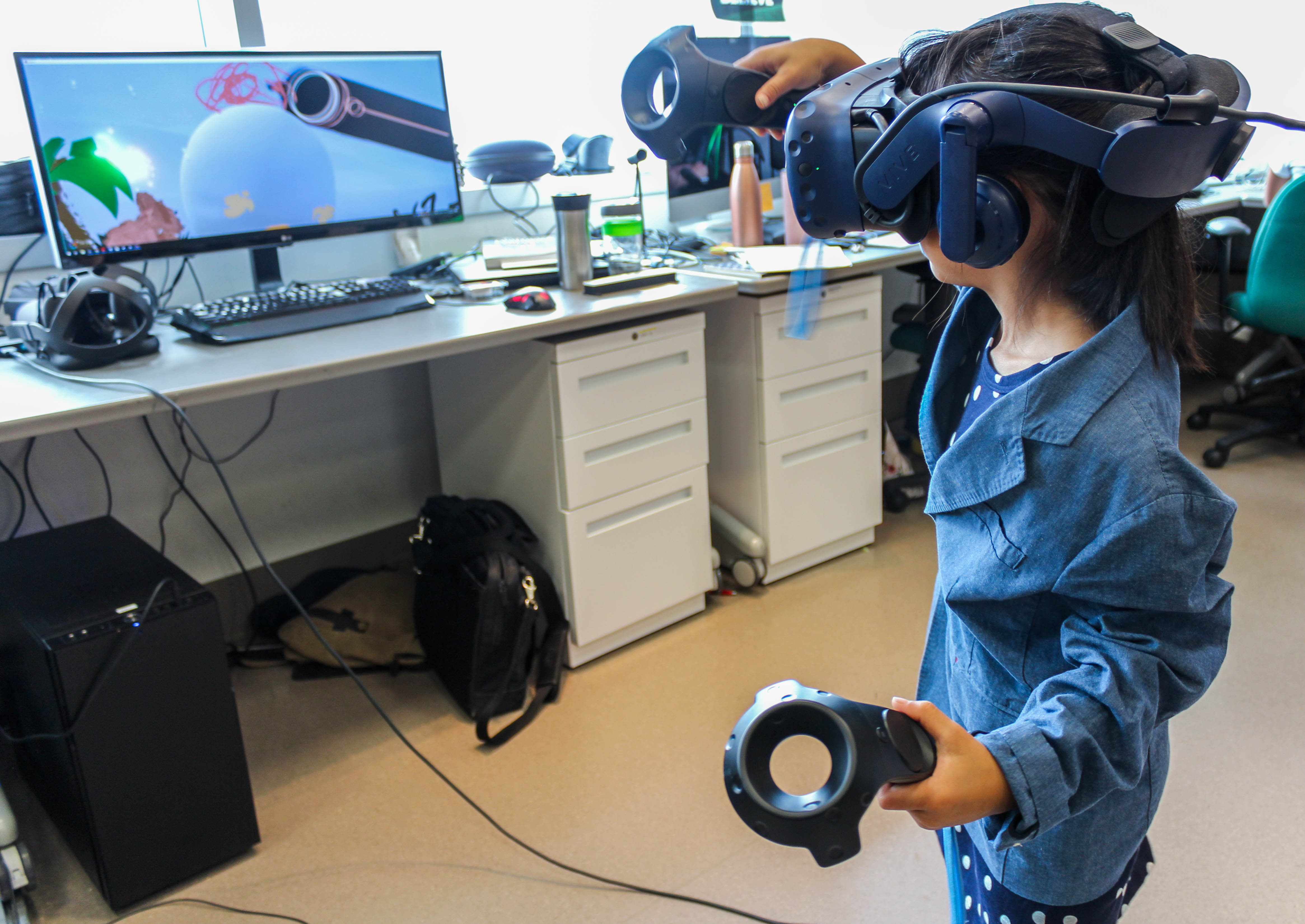
"The youth that come through the lab are incredibly bright individuals that deserve the opportunity to grow into the people that they strive to be," says Digital Art Director Valery Dufour. (Photo: Laurie Wang)
"We really want them to embrace their 'inner nerd' and dive into all things science and rehabilitation," Rehabilitation Robotics Lab Digital Art Director Valery Dufour said, referring to the high schoolers who came to the University of Alberta for part of the ATB Future Transformer Camp this summer.
Teens traded in their sunscreen for science during a visit this month to the Faculty of Rehabilitation Medicine's Rehab Robotics Lab where they learned about the art and design aspects of rehabilitation medicine-and it's all thanks to help from a virtual, 3D world created by Dufour.
"ATB approached us with their summer camp, as they had heard about the RRL and how we are leaders in using cutting-edge technology to create innovative solutions within the Faculty of Rehabilitation Medicine. We already host numerous tours with Women in Scholarship, Engineering, Science, and Technology (WISEST) and USchool at the University of Alberta to get our young people interested in science and technology, so when ATB proposed we run a segment in their summer camp for 'inspiring Alberta's next innovators,' it was a natural fit."
During the camps, youth are introduced to the latest technology being used for research and treatment in rehabilitation medicine. The hope is that the students will be inspired to pursue careers in STEM and start to think outside the box when it comes to new ideas for health care technology and its uses.
With this in mind, Dufour created a 3D world where students can illustrate their own art pieces, giving them a taste of the versatility of augmented and virtual reality (AR and VR) technologies.
"Our team has created both learning objects and simulations in VR/AR that are currently being used by students at the University of Alberta. In this case, we are teaching kids how to use Google Tiltbrush, a VR drawing application that allows kids to create art in an immersive virtual environment. We teach them fine motor control skills, how to use the technology, how to create in a 3D space and how to translate abstract concepts into pseudo-physical existence. This gets them familiar with the technologies and also helps drum up some excitement about applying these kinds of innovations in their own future careers."
Students also learn how to collaborate in a team setting, which is a vital skill for them to have when pursuing any career path.
"The youth that come through the lab are incredibly bright individuals that deserve the opportunity to grow into the people that they strive to be. We recognize this and believe in their potential. Showing these kids what is up and coming in technology and science and letting them meet with professionals and potential mentors in a collaborative space, it's a priceless experience for them," said Dufour. "This is a sensitive time in their lives-they're just starting to map out their career paths. We hope that the summer camp and the early exposure to what we do will give the students an opportunity to take the classes they need if they want to enter in to the STEM (Science, Technology, Engineering and Math) fields."
Dufour also hopes that by continuing to run summer camps such as this, more kids will be inspired to pursue opportunities not only in STEM, but also in rehabilitation medicine and robotics where these types of tools can also be applied.
"Be innovative and change the world-change people's lives. With this summer camp, we're teaching these students that science can be fun and that technology can be used for things you never thought possible-even art!"